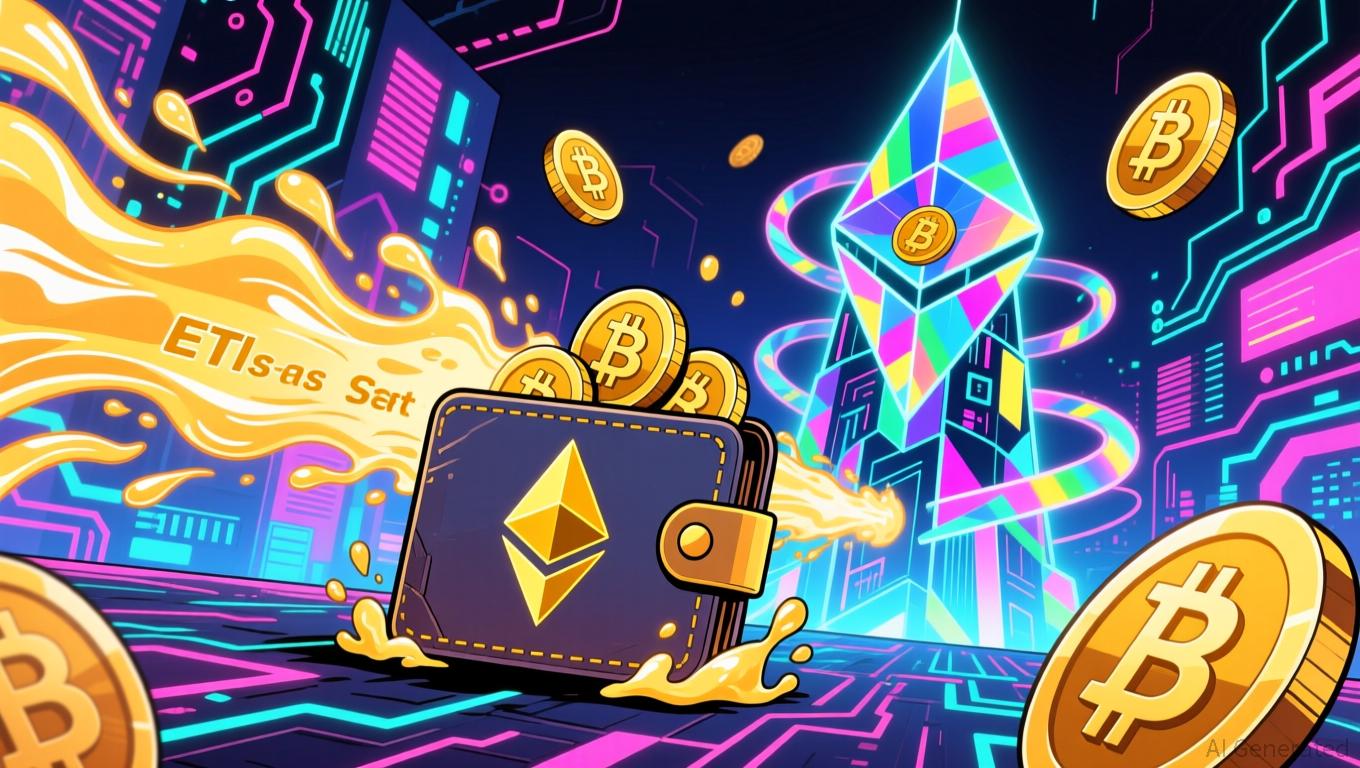$40K Gas Fee Turns Into $1M Gain: Jesse Token Sniping Highlights Barriers to Entry in Crypto
- An address paid $40K in gas fees to secure 7.6% of Jesse token, netting $1M profit after selling its stake. - The "scientist" actor exploited advanced tools to front-run Jesse's token sale, highlighting DeFi's competitive "sniping" dynamics. - High gas fees and technical barriers concentrate token sale opportunities among well-resourced participants, raising accessibility concerns. - Jesse token's launch, led by Base co-founder, reflects broader crypto trends where strategic timing and resources drive sp
A particular wallet spent close to $40,000 on
The Jesse token, introduced by Base co-founder Jesse, attracted a "scientist"—a term for individuals or groups using sophisticated methods to front-run trades. By spending 67 ETH (about $40,000 in gas), the wallet secured a notable chunk of the token supply. At the time, this investment equated to a market value of $2.4 million.

This episode highlights the increasing prevalence of "sniping" in decentralized finance (DeFi), where traders compete to grab tokens during highly anticipated launches. These tactics often demand significant upfront spending, including high gas fees to ensure transaction priority on blockchain networks. In this scenario, the successful snipe not only yielded a substantial profit but also illustrated both the risks and rewards that come with speculative crypto trading.
While the Jesse token's story is relatively niche, it mirrors broader industry trends. For example, another report described a crypto trader who lost $168 million after incorrectly predicting the market bottom, underscoring the sector's notorious volatility. In contrast, the Jesse token launch resulted in a more positive outcome, though it required considerable initial capital.
This transaction also brings up concerns about who can participate in token economies. High gas costs and the technical know-how needed for such trades can exclude smaller investors, giving an edge to those with more resources. This pattern isn't exclusive to Jesse; similar dynamics have been seen in other token launches, where early access is dominated by those with both financial and technological advantages.
Jesse, the creator of the Jesse token, is a well-known name in the crypto world, having co-founded Base, a Layer 2 blockchain built on
As the cryptocurrency landscape continues to develop, high-profile trades like this provide valuable lessons for both individual and institutional investors. They emphasize the need for precise timing, technical skill, and careful risk assessment in a market where fortunes can change in an instant. For now, the Jesse token launch stands as a clear example of both the opportunities and hazards present in the fast-moving world of crypto.
Disclaimer: The content of this article solely reflects the author's opinion and does not represent the platform in any capacity. This article is not intended to serve as a reference for making investment decisions.
You may also like
Bitcoin News Update: Dalio Limits Bitcoin Holdings to 1% Due to Traceability and Quantum Threats
- Ray Dalio maintains a 1% Bitcoin allocation but doubts its viability as a global reserve asset due to traceability and quantum computing risks. - He favors gold over Bitcoin for its physical tangibility and resistance to digital vulnerabilities, while advising up to 15% portfolio exposure to "hard currencies." - Quantum threats and recent market corrections (32% drop from October 2025 highs) highlight Bitcoin's instability, with institutional ownership rising to 28% amid ETF adoption. - Dalio's cautious

Examining the Drivers and Long-Term Viability of DASH’s Surge Amidst a Fluctuating Cryptocurrency Market
- Dash (DASH) cryptocurrency surged 50% in November 2025, driven by privacy features and real-world adoption in emerging markets. - Hybrid proof-of-work/stake consensus and instant transactions attracted investors amid regulatory scrutiny of transparent blockchains. - Market dynamics included $2B trading volume and renewed interest in privacy coins, though Bitcoin's decline highlighted crypto market volatility. - Sustainability concerns include regulatory risks for privacy coins, competition from newer pro
Vitalik Buterin's Latest ZK Update and Its Influence on the Cryptocurrency Landscape
- Vitalik Buterin's removal of Ethereum's modexp precompile optimizes ZK scalability, prioritizing long-term throughput over short-term gas efficiency. - Integrating ZK proofs with MPC and FHE enhances DeFi privacy, enabling secure voting and private transactions while maintaining regulatory compliance. - Institutional adoption of ZK infrastructure accelerates, with projects like Succinct Labs securing $55M to build enterprise-grade solutions for cross-chain interoperability. - ZK rollups like StarkNet and
Vitalik Buterin Backs ZKsync: What This Means for the Evolution of Layer 2 Scaling
- ZKsync gains momentum in 2025 via Atlas/Fusaka upgrades, Vitalik Buterin's endorsement, and 15,000 TPS throughput. - It captures 15% L2 TVL market share with cost-effective zk-rollups ($0.01/tx) and EVM compatibility, trailing Arbitrum (45%) and Optimism (25%). - Institutional ZK token adoption (50% price surge) and ZK Stack liquidity bridging position it as a high-potential Ethereum scalability solution. - Risks include fierce L2 competition, Ethereum's fee revenue shifts, and Fusaka's 30,000 TPS target